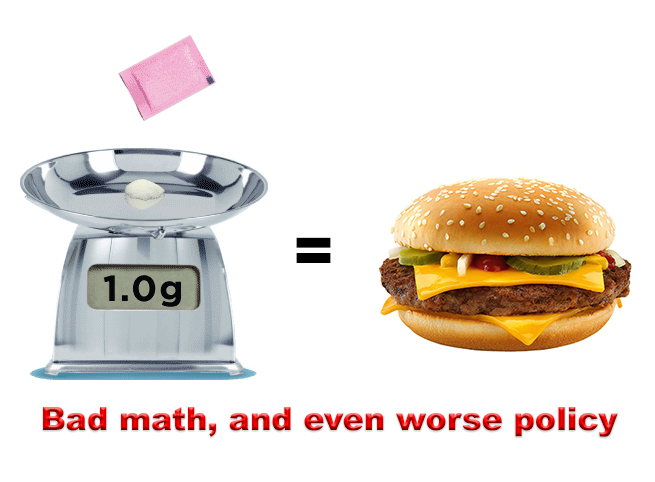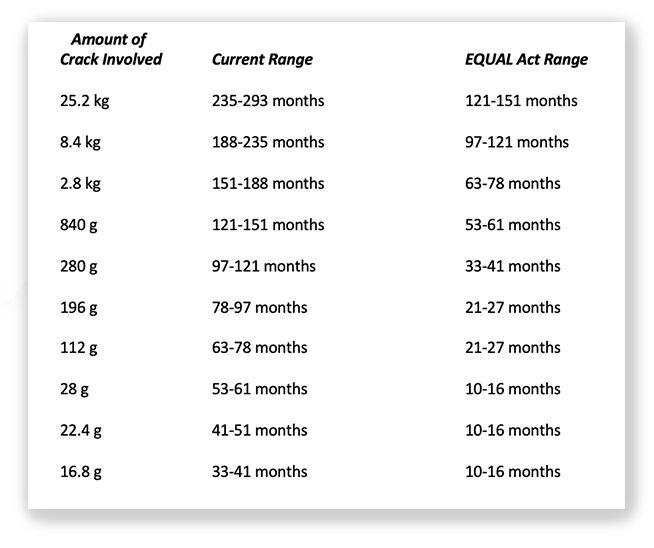We post news and comment on federal criminal justice issues, focused primarily on trial and post-conviction matters, legislative initiatives, and sentencing issues.

MORE IS BETTER
By now, everyone knows that for a federal prisoner to win a sentence reduction motion under 18 USC § 3582(c)(1)(A) – known to all by the misleading but convenient shorthand “compassionate release” – he or she must show that extraordinary and compelling reasons exist for the motion (a list of what situations fit this bill may be found in the U.S. Sentencing Commission’s new § 1B1.13(b)) and that grant of the requested reduction is consistent – whatever that means – with the sentencing factors of 18 USC § 3553(a). Such factors include the history of the offense and the offender, the need for just punishment, protection of the public, deterrence, and other considerations.
 Unsurprisingly, most federal prisoners seeking compassionate release focus on the “extraordinary and compelling reasons” standard, because it’s easier to quantify, and people generally like to focus more on the bad things currently happening to them than bad things they might have done in the past. Yet as many compassionate release motions founder on the shoals of § 3553(a) as ever die on the “extraordinary and compelling” hill.
Unsurprisingly, most federal prisoners seeking compassionate release focus on the “extraordinary and compelling reasons” standard, because it’s easier to quantify, and people generally like to focus more on the bad things currently happening to them than bad things they might have done in the past. Yet as many compassionate release motions founder on the shoals of § 3553(a) as ever die on the “extraordinary and compelling” hill.
While you sit back to drink in the beautiful symmetry of the prior paragraph’s mixed metaphor, consider the strange position that “post-sentencing rehabilitative efforts” occupy in the compassionate release firmament. Post-sentencing rehabilitative efforts may not be the sole extraordinary and compelling reason for a sentence reduction, but they may be one of several. At the same time, post-sentencing rehabilitative efforts are relevant to the § 3553(a) sentencing factors: good behavior and completion of in-prison programming suggest that the prisoner will not pose a danger to the public and perhaps has already been justly punished so as to correct his or her errant ways.
So what kind of consideration must a district court give evidence of good conduct and programming? The 4th Circuit ruled almost five years ago in United States v. Martin that “where a movant presents substantial evidence of post-sentencing rehabilitative efforts, a district court must provide a more robust and detailed explanation in ruling on a motion for compassionate release.” Last week, the appellate court reminded everyone that for the Martin rule to apply, a movant should remember that more is better.
 Historically, Angel Centeno-Morales had been anything but an angel. Before his current felon-in-possession conviction, he had been convicted of aggravated assault with a deadly weapon, burglary, battery, and several gun and drug offenses. In his current case, he sold meth and threatened people with his gun to discourage cooperation with law enforcement.
Historically, Angel Centeno-Morales had been anything but an angel. Before his current felon-in-possession conviction, he had been convicted of aggravated assault with a deadly weapon, burglary, battery, and several gun and drug offenses. In his current case, he sold meth and threatened people with his gun to discourage cooperation with law enforcement.
While he was locked up, Angel’s wife died of COVID, leaving their young son without a caregiver. He filed for compassionate release, arguing that the death of the primary caregiver for the minor child was an extraordinary and compelling reason for a compassionate release grant.
The district court agreed but denied the compassionate release motion nonetheless based on the § 3553(a) factors. The judge cited that Angel had distributed a lot of meth while on probation, used guns for intimidation and coercion, and had gotten two disciplinary infractions in his six years in prison. The district court held that Angel’s continued incarceration was “necessary to reflect the seriousness of his offenses, protect the public from further crimes, provide for just punishment, promote respect for the law, and provide deterrence.”
 On appeal, Angel complained that the district court violated Martin by not providing enough detail supporting its denial, but the 4th Circuit disagreed. The Martin defendant presented “a mountain of new mitigating evidence that the sentencing court never evaluated,” the Circuit said. “What’s more, the movant in Martin was incarcerated for nearly two decades, became a respected tutor for other inmates, and exhibited such exemplary behavior that correctional staff moved her into a low-security facility.” But district courts must only “set forth enough to satisfy our court that it has considered the parties’ arguments and has a reasoned basis” for its decision. “The district court does not owe every movant for compassionate release a ‘robust and detailed’ explanation on every argument about post-sentencing rehabilitative efforts,” the 4th said.
On appeal, Angel complained that the district court violated Martin by not providing enough detail supporting its denial, but the 4th Circuit disagreed. The Martin defendant presented “a mountain of new mitigating evidence that the sentencing court never evaluated,” the Circuit said. “What’s more, the movant in Martin was incarcerated for nearly two decades, became a respected tutor for other inmates, and exhibited such exemplary behavior that correctional staff moved her into a low-security facility.” But district courts must only “set forth enough to satisfy our court that it has considered the parties’ arguments and has a reasoned basis” for its decision. “The district court does not owe every movant for compassionate release a ‘robust and detailed’ explanation on every argument about post-sentencing rehabilitative efforts,” the 4th said.
Angel presented no “mountain” of mitigating evidence that he had become an angel. “He completed just a few vocational courses and received two disciplinary infractions while incarcerated. Importantly, he remains classified as a ‘medium’ security inmate. This is not the kind of exceptional post-sentencing evidence for which Martin would require a ‘robust and detailed’ explanation,” the Circuit held.
United States v. Centeno-Morales, Case No. 22-6607, 2024 U.S. App. LEXIS 310 (4th Cir. January 5, 2024)
United States v. Martin, 916 F.3d 389 (4th Cir. 2019)
– Thomas L. Root









